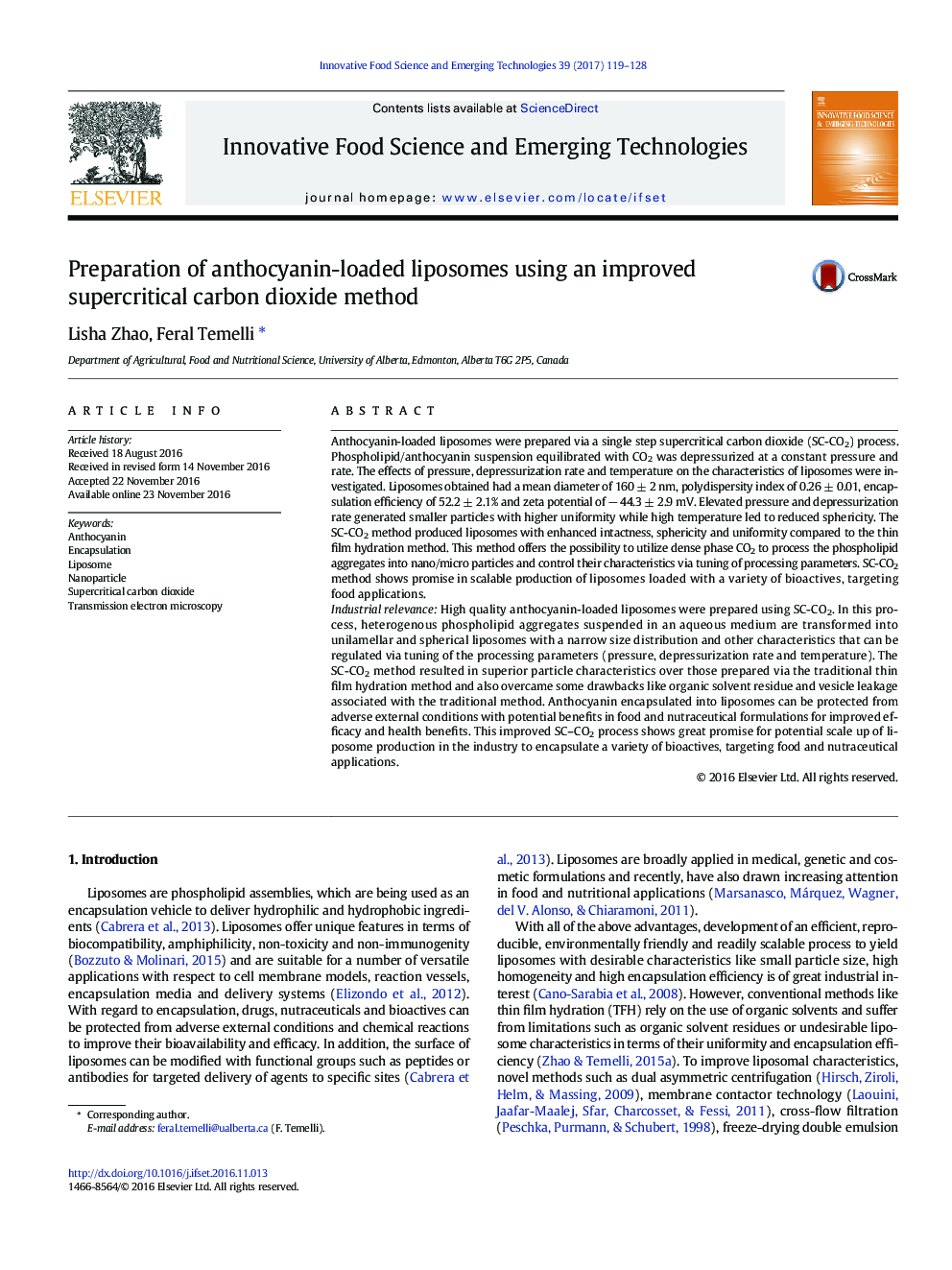| Article ID | Journal | Published Year | Pages | File Type |
|---|---|---|---|---|
| 5521855 | Innovative Food Science & Emerging Technologies | 2017 | 10 Pages |
â¢Liposomes were prepared using a supercritical carbon dioxide (SC-CO2) method.â¢The SC-CO2 method yielded liposomes with small particle size and high uniformity.â¢High pressure and depressurization rate yielded smaller and more uniform vesicles.â¢Liposomes were stable for 3 weeks, maintaining unimodal size distribution.â¢The SC-CO2 method shows great promise to produce liposomes to deliver bioactives.
Anthocyanin-loaded liposomes were prepared via a single step supercritical carbon dioxide (SC-CO2) process. Phospholipid/anthocyanin suspension equilibrated with CO2 was depressurized at a constant pressure and rate. The effects of pressure, depressurization rate and temperature on the characteristics of liposomes were investigated. Liposomes obtained had a mean diameter of 160 ± 2 nm, polydispersity index of 0.26 ± 0.01, encapsulation efficiency of 52.2 ± 2.1% and zeta potential of â 44.3 ± 2.9 mV. Elevated pressure and depressurization rate generated smaller particles with higher uniformity while high temperature led to reduced sphericity. The SC-CO2 method produced liposomes with enhanced intactness, sphericity and uniformity compared to the thin film hydration method. This method offers the possibility to utilize dense phase CO2 to process the phospholipid aggregates into nano/micro particles and control their characteristics via tuning of processing parameters. SC-CO2 method shows promise in scalable production of liposomes loaded with a variety of bioactives, targeting food applications.Industrial relevanceHigh quality anthocyanin-loaded liposomes were prepared using SC-CO2. In this process, heterogenous phospholipid aggregates suspended in an aqueous medium are transformed into unilamellar and spherical liposomes with a narrow size distribution and other characteristics that can be regulated via tuning of the processing parameters (pressure, depressurization rate and temperature). The SC-CO2 method resulted in superior particle characteristics over those prepared via the traditional thin film hydration method and also overcame some drawbacks like organic solvent residue and vesicle leakage associated with the traditional method. Anthocyanin encapsulated into liposomes can be protected from adverse external conditions with potential benefits in food and nutraceutical formulations for improved efficacy and health benefits. This improved SC-CO2 process shows great promise for potential scale up of liposome production in the industry to encapsulate a variety of bioactives, targeting food and nutraceutical applications.
